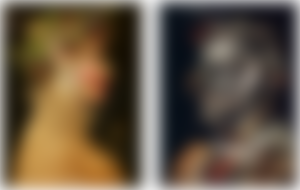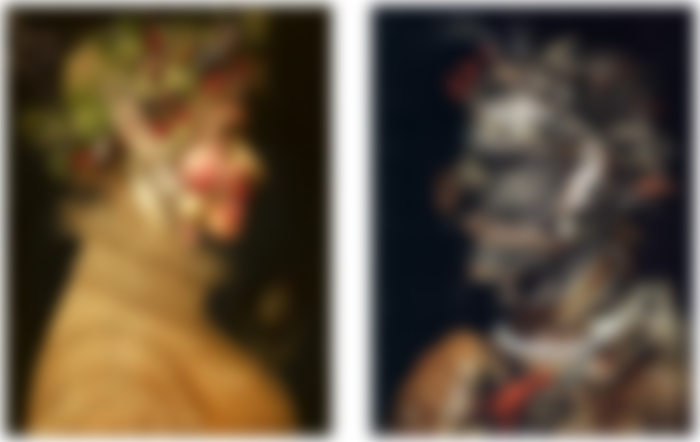Quizzes & Puzzles 36
Some new problems with which to exercise the brain. But first a look at answers and solutions to Quizzes & Puzzles 35. New problems below the image (cartoon).
Answer to Quiz 35:1
Herpetology (from Greek herpeton, “creeping thing”) is he science and study of reptiles and amphibians. An herpetologist is a zoologist with this speciality.
There is a specific branch of herpetology which deals with snakes – what is it called?
It is called ophiology or ophiodiology.
Unreasonable fear of snakes, a quite common ailment, is called ophidiophobia or ophiophobia.
I you are interested in snakes, mythical or real, read my series about serpents and snakes: From the Sacred Cobras of Egypt to Quezalcoatl: Serpents & Snakes in Mythology, Snakes in Astrology & Heraldry, and Snakes in Real Life.
Answer to Quiz 35:2
Who created Winnie-the-Pooh and wrote the original story?
English author A. A. Milne wrote the original story, or stories. The visual aspect of Winnie-the-Pooh, his friends and environment, were created by the excellent illustrator E. H. Shepard.
Answer to Quiz 35:3
Speaking about Winnie-the-Pooh, a lot of people incorrectly think he was created by the Disney team, and that's a relatively common misconception about many “Disney characters or stories”. Snow White and Cinderella, for instance, are based on old folktales. However, characters and stories being Disney originals exist as well. Can you mention five characters really being created by the Disney team?
Some examples are Mickey Mouse, Minnie Mouse, Donald Duck, Daisy Duck, Goofy, Uncle Scrooge,...
Answer to Quiz 35:4
Who painted these pictures?

The answer is Milanese painter Giuseppe Arcimboldo. He is famous for his paintings of faces built up by vegetables, fish, etc. The most amazing fact about him is that he lived 1527-1593, while his art feels almost modern. One could suspect this to be an artist in the periphery of Renaissance art, but he was also a court portraitist at the court of Holy Roman emperor Rudolf II. If you want to read more about Arcimboldo, read my article Renaissance Artist Giuseppe Arcimboldo - Surprisingly Modern.
Answer to Quiz 35:5
In this question I ask for the name a man who changed perceived history by proving as true, the basis for an ancient story everyone at the time thought was entirely fictitious. By his work, he also founded the science of archaeology. Who was he?
The story is about a city, the man in our question proved that the city had really existed, he found its site and excavated it. What was the name of this city?
So a correct answer provides two things: the name of the man, and the name of the city.
The man was Heinrich Schliemann (1822-1890); and the city was Troy, which he located by the help of Homer's Iliad.
You can read more in Schliemann & Troy, which is section IV of my article History – Understand the Present by Understanding the Past.
Answer to Quiz 35:6
What is this symbol called and which city does it symbolize?

This is the Lily (giglio) of Florence; so it is a symbol of Florence in Italy.
In Fleur-de-lis & The Lily of Florence, I wrote:
“There are many stories about this symbol and its origin. One connects it to when the Romans founded the city, Florentia, and the celebration of the goddess Flora. Another story refers to the death of Fiorino, a Roman praetor. He died when Fiesole was attacked.
In reality, there is no evidence that this was a symbol of Florence before the 12th century. The Florentines carried the Giglio in the the battles of the first crusade. The first symbol, however, was a white lily on a red background. The colours were reversed in 1266, when the Guelph party wanted to mark their victory over the Ghibellines.
According to Roman mythology, the lily came from a drop of milk falling from the breast of the goddess Juno. (Compare that to the Christian view that the first lily was born from the tear of Eve when she had to leave the Garden of Eden.)
The Florentine lily is an iris, the Giaggiolo, also called Orris root or Florentine iris.”
Answer to Quiz 35:7
Everyone has heard about the United Arab Emirates – and the two most well-known of these seven emirates are Dubai and Abu Dhabi, but do you know the names of the other five?
They are Ajman, Fujairah, Ras Al Khaimah, Sharjah, and Umm Al Quwain.

And now some new exercises for brain & memory...
Quiz 36:1
Georges Prosper Remi was a famous European cartoonist. He is best known for his comic albums.
What is the name of the hero and main character of his albums?
If you have never heard the name Georges Prosper Remi, I bet you have encountered his better known pen name. Under what pen name did he publish his comic albums?
Quiz 36:2
Who created “2001: A Space Odyssey”, the famous science-fiction movie from 1968? I want the name of the director.
Quiz 36:3
In music, what is the difference between polyphony and homophony?
Quiz 36:4
Everyone has heard about oil painting, and maybe some of you have painted in oil. But what sort of oil is normally used as a medium for the colour pigments in oil painting?
Quiz 36:5
Who created the Julian Calendar, on which our present Gregorian calendar is based?
Quiz 36:6
Socrates is one of the most famous philosophers from ancient Greece. However, contrary to most other philosophers, he did not write anything. What we know about him comes from the writings of his students, most notably one of them – a man who by his own right became one of the most influential humans ever. Who was that?
You'll find answers and solutions in the next “Quizzes & Puzzles”.
Quizzes & Puzzles has its own label in my Index, where all issues of the series can be found.
In my INDEX, you can find all my writings on Read.Cash, sorted by topic.
Copyright © 2022 Meleonymica/Mictorrani. All Rights Reserved
(Cartoon by Christian Dorn/Pixabay, CC0/Public Domain.)
(All the images are in the Public Domain.)



Quiz 34:4 I guess the paint use is grease oil